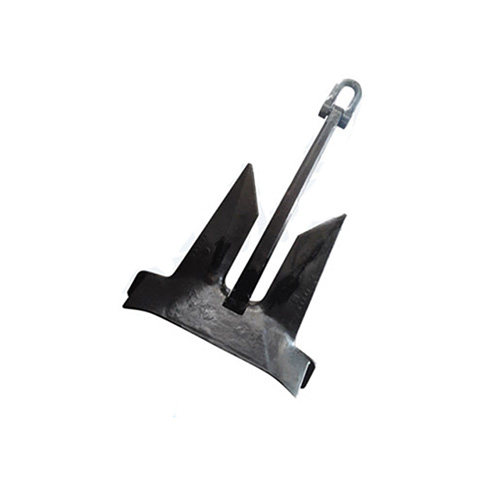Energy efficiency is a crucial consideration in the design of high holding power anchors, particularly in industries like maritime and offshore, where these anchors play a pivotal role in vessel stability and safety. Recent advancements in anchor design not only enhance their holding power but also significantly improve energy efficiency in marine operations. This article delves into the latest innovations in high holding power anchor design and their impact on energy conservation and sustainability.

Enhanced Shapes:
Modern anchor designs integrate aerodynamic and hydrodynamic principles to minimize drag during deployment and usage. By reducing resistance in water, less energy is needed to maintain the anchor's position, especially in dynamic conditions with strong currents or waves. Computational fluid dynamics (CFD) simulations refine anchor shapes, resulting in lower energy consumption during deployment and retrieval.
Material Advancements:
Innovations in materials science have led to the development of high-strength, lightweight materials that are durable and corrosion-resistant. These materials reduce the anchor's weight, requiring less energy for handling, deployment, and retrieval. Moreover, advanced coatings and surface treatments minimize friction and corrosion, further enhancing energy efficiency.
Optimized Fluke Design:
Improvements in anchor fluke design, including shape, angle, and surface area, enhance penetration into different seabeds more efficiently. Better penetration means increased holding power with less weight and drag, resulting in energy savings. Some anchors incorporate mechanisms like roll-bars or setting flukes to aid in quick and secure penetration of the seabed.
Smart Anchor Systems:
Integration of sensors, actuators, and real-time monitoring systems enables dynamic adjustments based on environmental conditions. Smart anchors autonomously optimize their orientation and position, conserving energy while ensuring secure anchoring. These systems offer valuable insights into anchor performance, facilitating informed decisions to further enhance energy efficiency.
Hybrid Energy Integration:
High holding power anchors are increasingly used alongside renewable energy systems such as offshore wind turbines or tidal energy converters. Anchor designs accommodating these systems improve overall efficiency in renewable energy generation by ensuring stable and reliable mooring with minimal energy loss. Optimizing anchor design for renewable energy systems maximizes energy efficiency and sustainability.

Innovative Deployment Mechanisms:
Advancements in anchor deployment mechanisms, such as remotely operated systems or autonomous underwater vehicles (AUVs), enable precise positioning with minimal human intervention and energy expenditure.
Advanced Testing and Simulation:
Engineers utilize computer-aided design (CAD), computational fluid dynamics (CFD), and finite element analysis (FEA) to virtually optimize anchor designs before physical prototyping. This iterative design approach eliminates the need for costly and energy-intensive trial and error testing, resulting in more efficient anchor designs.
Integration with Renewable Energy:
In some instances, high holding power anchors are paired with renewable energy systems like offshore wind turbines or tidal energy devices. Aligning anchor design with these systems boosts overall energy efficiency in marine renewable energy applications.
In conclusion, advancements in high holding power anchor design not only enhance maritime safety and reliability but also contribute significantly to energy efficiency and sustainability. As technology progresses, further innovations in anchor design are anticipated to drive even greater improvements in energy efficiency and sustainability for the maritime and offshore sectors.







